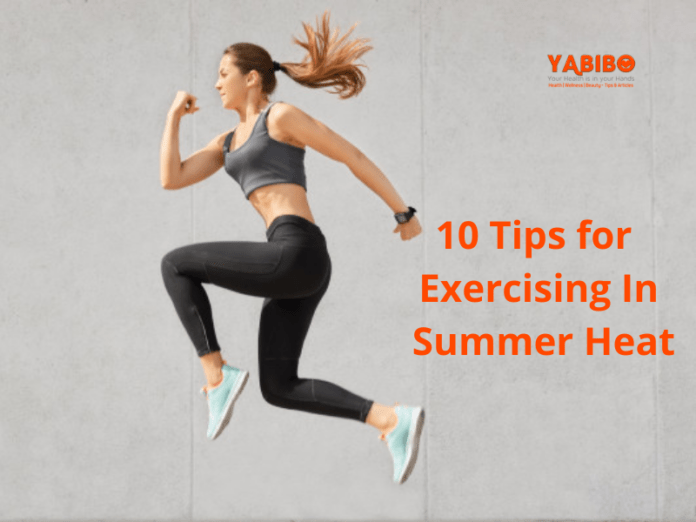Exercising in the summer heat is a difficult proposition and a person carrying out such exercises needs to be cautious of sunstroke. Summer heat exercise can be tiresome.
On a beautiful sunny day, people like to play around or exercise, yet this is possible if the weather is comfortable and warm. Exercising in the summer heat can be tough.
Table of Contents
1. Ease Up
A person should know when to ease up, in case a person is traveling to hot and humid climates. In such weather, exercise is not so easy and comfy. This is part and parcel of summer heat exercise.
The body has to adapt itself to the weather condition while exercising and thus on a hot day the exercise pace picks up slowly as well as the length of the workout.
2. Avoid the hottest part of the day
It is better to get up early and enjoy the cool of the morning, or go out at sunset or later. In the heat of midday (typically between 10 am and 4 pm) it is better to be under shade or perhaps jumps in a pool. The person can sign up for an aqua-aerobics class or even carry a fan/spray bottle for skin surface cooling.
3. Wear light-colored, lightweight clothing
Dark colors do absorb the heat, and thus make a person feel he or she is wrapped in a warm blanket. Heavyweight, tight-fitting clothing will also heat a person. Keep it loose. Keep it light. More air will thus be able to circulate over one’s skin, keeping a person cool. Proper clothes need to be worn while exercising in the summer heat.
4. Apply sun-block – UVA/UVB, preferably with titanium or zinc dioxide, or at least with avobenzone
Reapplying at two-hour intervals is advisable, despite labels having sweat proof and waterproof claims that are hours long. Many of these “long-lasting” claims are being investigated. Sunburn does increase the risk of premature skin aging and does increase one’s risk of skin cancer. Wearing wide-brimmed hats lessens sun exposure.
5. Drink up
Exercising in hot weather does increase body temperature. The body’s natural cooling system fails if exposed to soaring temperatures far too long. It could lead to heat exhaustion, which is awful fatigue. The person may suffer from heatstroke.
To keep cool, it is better to drink plenty of water. Eating plenty of fruits and vegetables helps. After exercise, drink more.
To re-hydrate during a pause in one’s physical activity is to eat a piece of fruit, or even carrots or celery sticks. The fruit and veggies will also indeed help replace valuable electrolyte loss.
6. Keep track of your hydration levels
It is good to check the color of the urine to know whether a person is hydrating properly. If it’s pale yellow (think lemonade), you are well hydrated. If it is darker (heading toward the color of apple juice), drink more.
But be aware that some medications and supplements do tend to alter the color of urine.
7. Don’t drink too much
Over-hydration, which is drinking too much water, leads to hyponatremia (low blood sodium). Drink during and after exercise and other physical activities and at other times of the day, as well as when a person feels thirsty.
8. Steer clear of sports drinks
These are loaded with calories. Sports drinks are not worth the caloric weight. Sports drinks should only be considered if the body is of ideal weight and if exercising for long durations at high intensities. Even then, it is better to dilute sports drinks to avoid excessive calorie consumption.
9. Eating fruit and vegetables
Eating fruits and vegetables during exercise does provide ample electrolytes for the body, even further decreasing the need for high-calorie sports drinks.

10. Do not allow the feeling of faintness, dizziness, and sickness.
It is better to go in for air-conditioned comfort if feeling:
- Weak
- Light-headed
- Dizziness/Paling of the skin
- Headache
- Muscle cramps
- Nausea or vomiting
- Rapid heartbeat
Always remember that even a 20-minute workout has positive health effects. It’s the number of days you exercise that matters most, not the length of time of any given exercise session.
Also Read, Relieve the Symptoms of Depression with Yoga.

